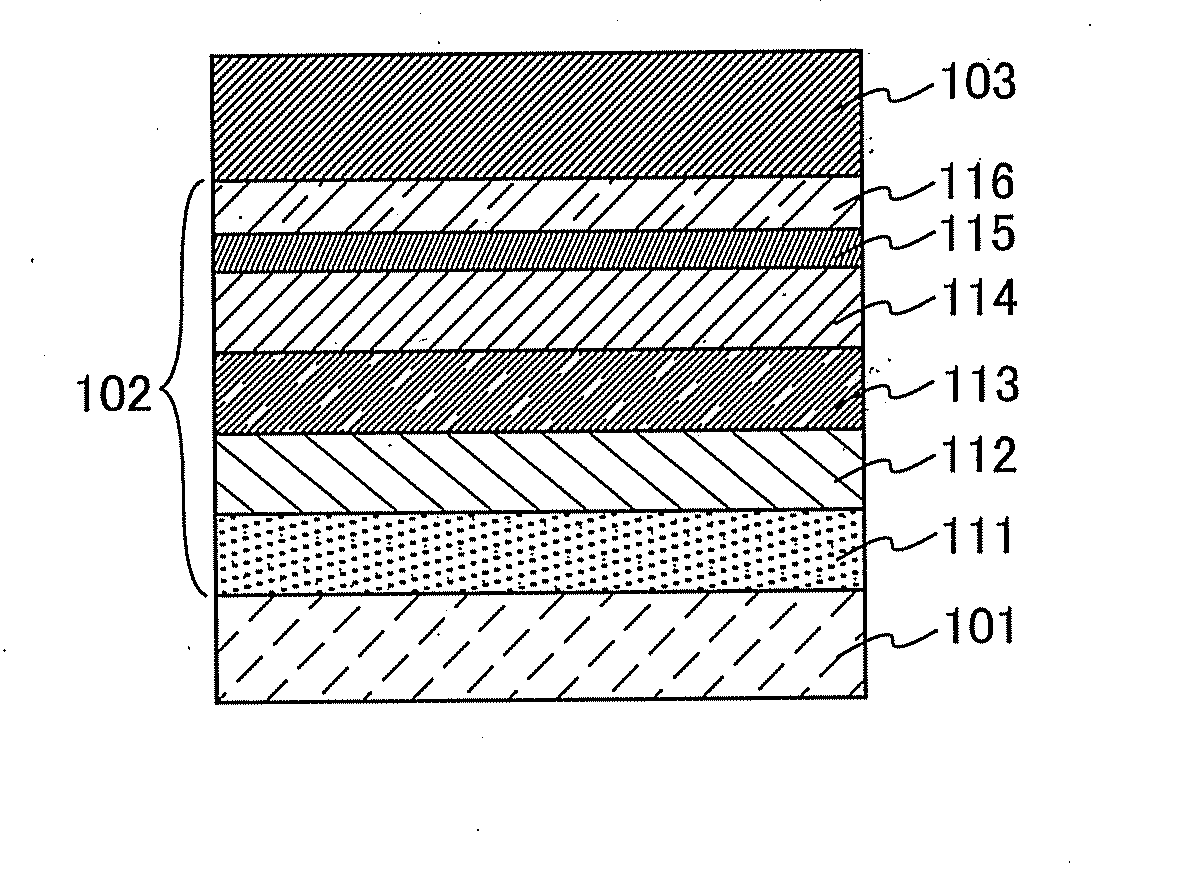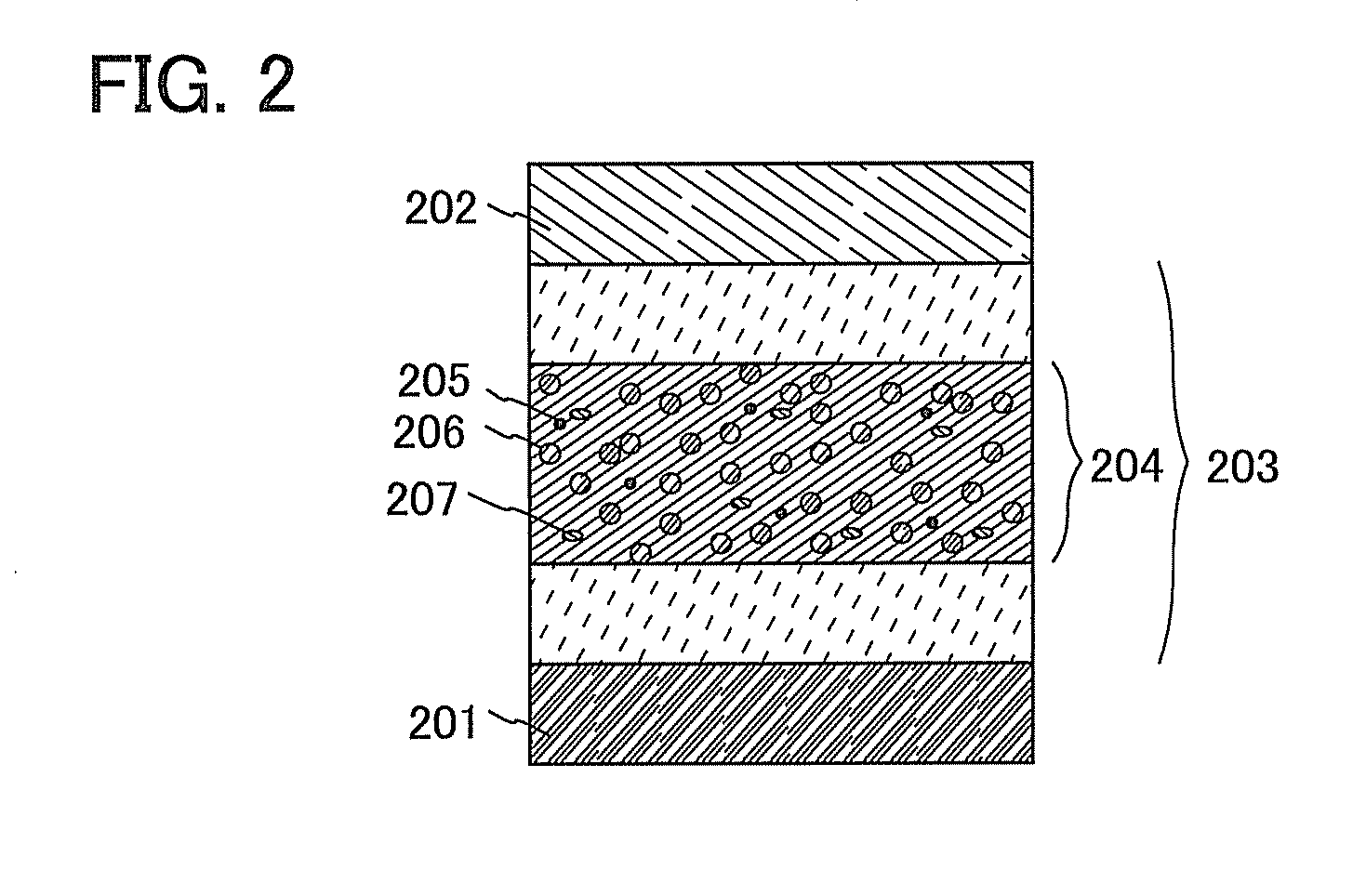Organometallic Complex, Light-Emitting Element, Light-Emitting Device, Electronic Device, and Lighting Device
a technology of light-emitting elements and complexes, applied in the field of organic complexes, can solve the problems of difficult generation of triplet excited molecules, and achieve the effects of low power consumption, high emission efficiency, and high reliability
- Summary
- Abstract
- Description
- Claims
- Application Information
AI Technical Summary
Benefits of technology
Problems solved by technology
Method used
Image
Examples
embodiment 1
[0047]In this embodiment, organometallic complexes which are embodiments of the present invention will be described.
[0048]An organometallic complex that is one embodiment of the present invention is an organometallic complex in which an aryl triazine derivative is a ligand. Note that one mode of an organometallic complex in which an aryl triazine derivative is a ligand and which is described in this embodiment is an organometallic complex having the structure represented by General Formula (G1) below.
[0049]In General Formula (G1), R1 represents any of a substituted or unsubstituted alkyl group having 1 to 4 carbon atoms, a substituted or unsubstituted monocyclic saturated hydrocarbon having 5 to 7 carbon atoms, a substituted or unsubstituted polycyclic saturated hydrocarbon having 7 to 10 carbon atoms, and a substituted or unsubstituted aryl group having 6 to 10 carbon atoms, R2 represents hydrogen or a substituted or unsubstituted alkyl group having 1 to 4 carbon atoms, and Ar1 rep...
embodiment 2
[0099]In this embodiment, a light-emitting element using the organometallic complex in which an aryl triazine derivative is a ligand and which is described in Embodiment 1 as one embodiment of the present invention is described. Specifically, a light-emitting element in which the organometallic complex is used for a light-emitting layer is described with reference to FIG. 1.
[0100]In a light-emitting element described in this embodiment, as illustrated in FIG. 1, an EL layer 102 including a light-emitting layer 113 is provided between a pair of electrodes (a first electrode (anode) 101 and a second electrode (cathode) 103), and the EL layer 102 includes a hole-injection layer 111, a hole-transport layer 112, an electron-transport layer 114, an electron-injection layer 115, a charge-generation layer (E) 116, and the like in addition to the light-emitting layer 113.
[0101]By application of a voltage to such a light-emitting element, holes injected from the first electrode 101 side and e...
embodiment 3
[0122]In this embodiment, as one embodiment of the present invention, a light-emitting element in which two or more kinds of organic compounds as well as a phosphorescent organometallic iridium complex are used for a light-emitting layer is described.
[0123]A light-emitting element described in this embodiment includes an EL layer 203 between a pair of electrodes (an anode 201 and a cathode 202) as illustrated in FIG. 2. Note that the EL layer 203 includes at least a light-emitting layer 204 and may include a hole-injection layer, a hole-transport layer, an electron-transport layer, an electron-injection layer, a charge-generation layer (E), and the like. Note that for the hole-injection layer, the hole-transport layer, the electron-transport layer, the electron-injection layer, and the charge-generation layer (E), the substances described in Embodiment 1 can be used.
[0124]The light-emitting layer 204 described in this embodiment contains a phosphorescent compound 205 using the phosp...
PUM
 Login to View More
Login to View More Abstract
Description
Claims
Application Information
 Login to View More
Login to View More - R&D
- Intellectual Property
- Life Sciences
- Materials
- Tech Scout
- Unparalleled Data Quality
- Higher Quality Content
- 60% Fewer Hallucinations
Browse by: Latest US Patents, China's latest patents, Technical Efficacy Thesaurus, Application Domain, Technology Topic, Popular Technical Reports.
© 2025 PatSnap. All rights reserved.Legal|Privacy policy|Modern Slavery Act Transparency Statement|Sitemap|About US| Contact US: help@patsnap.com



